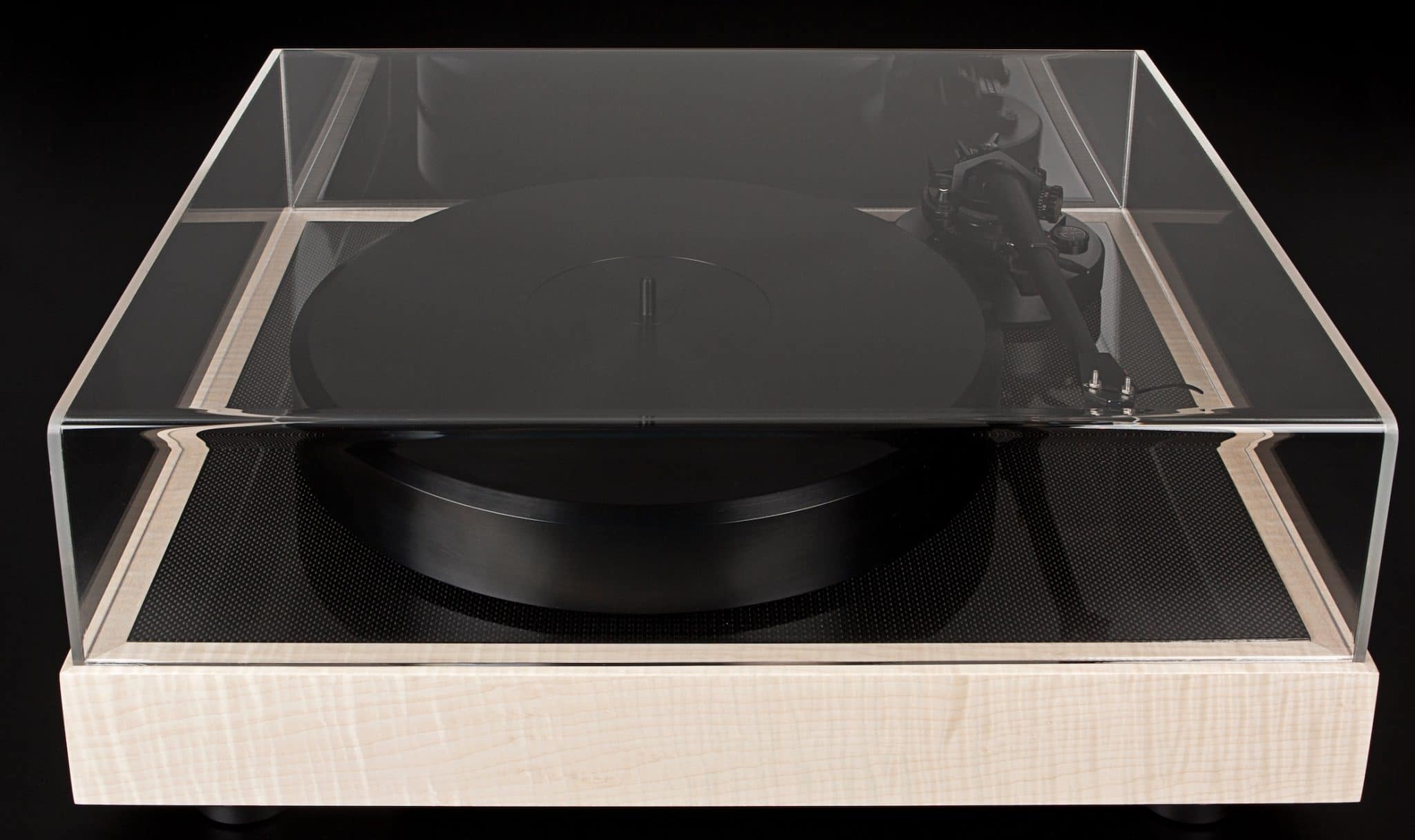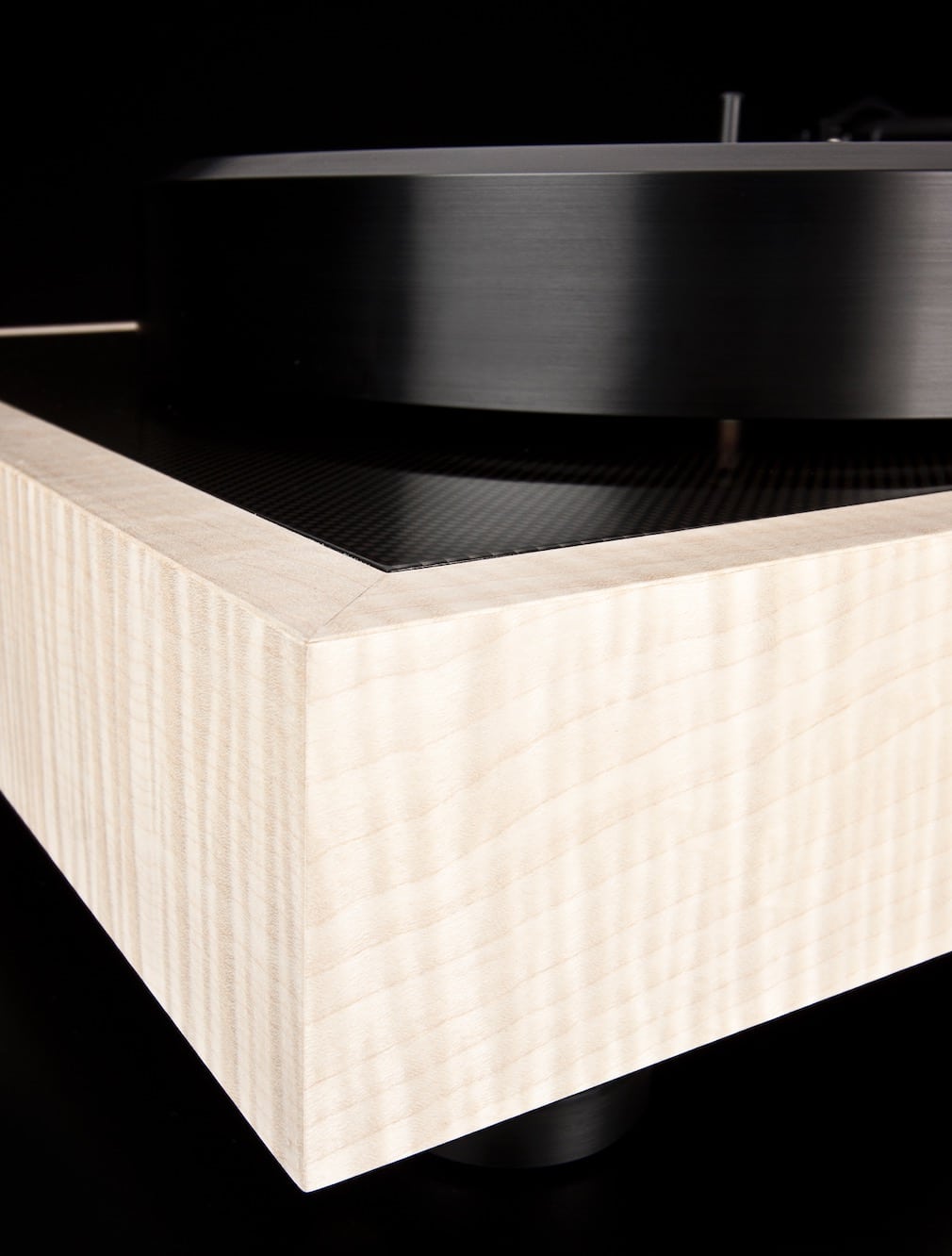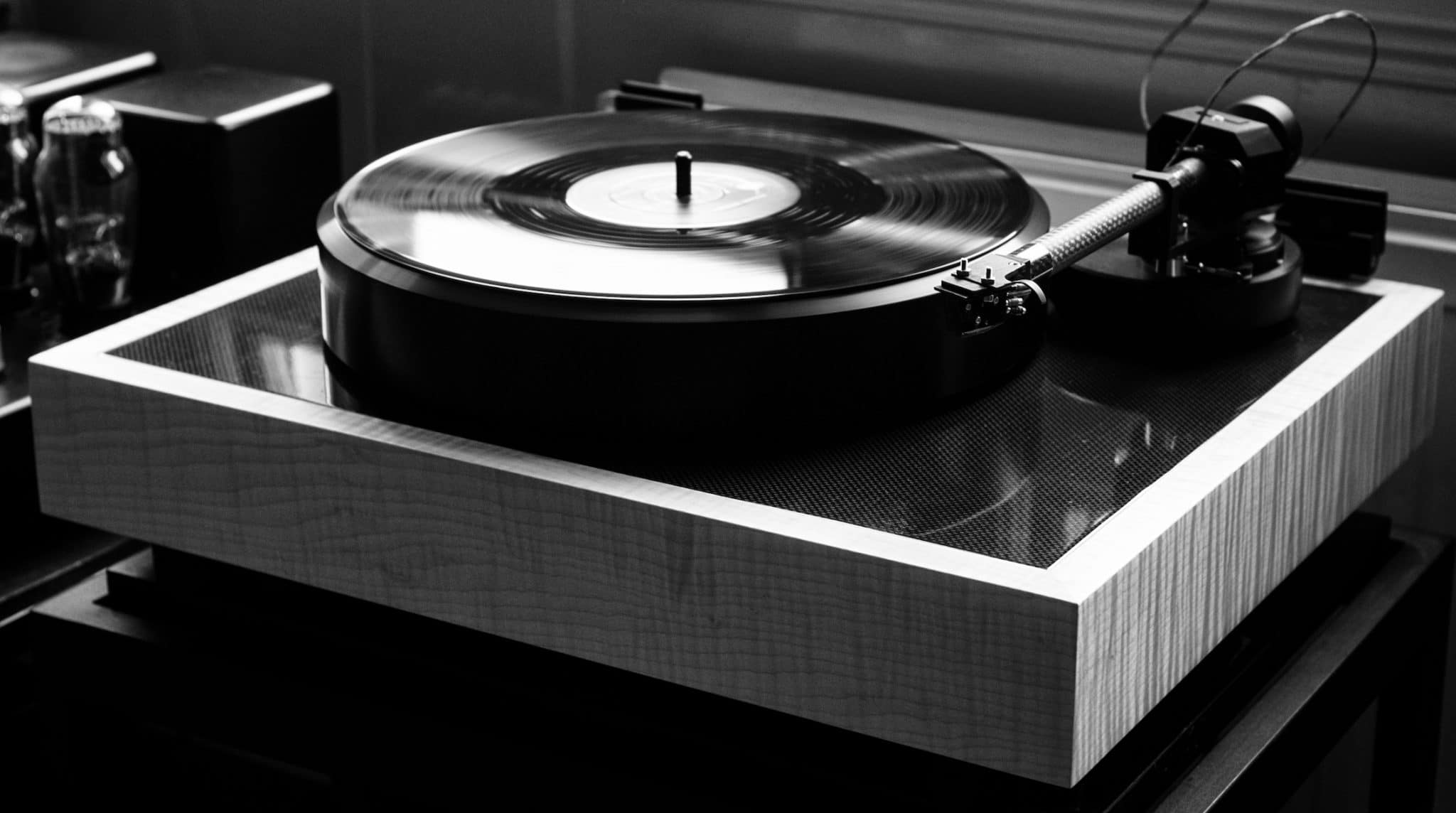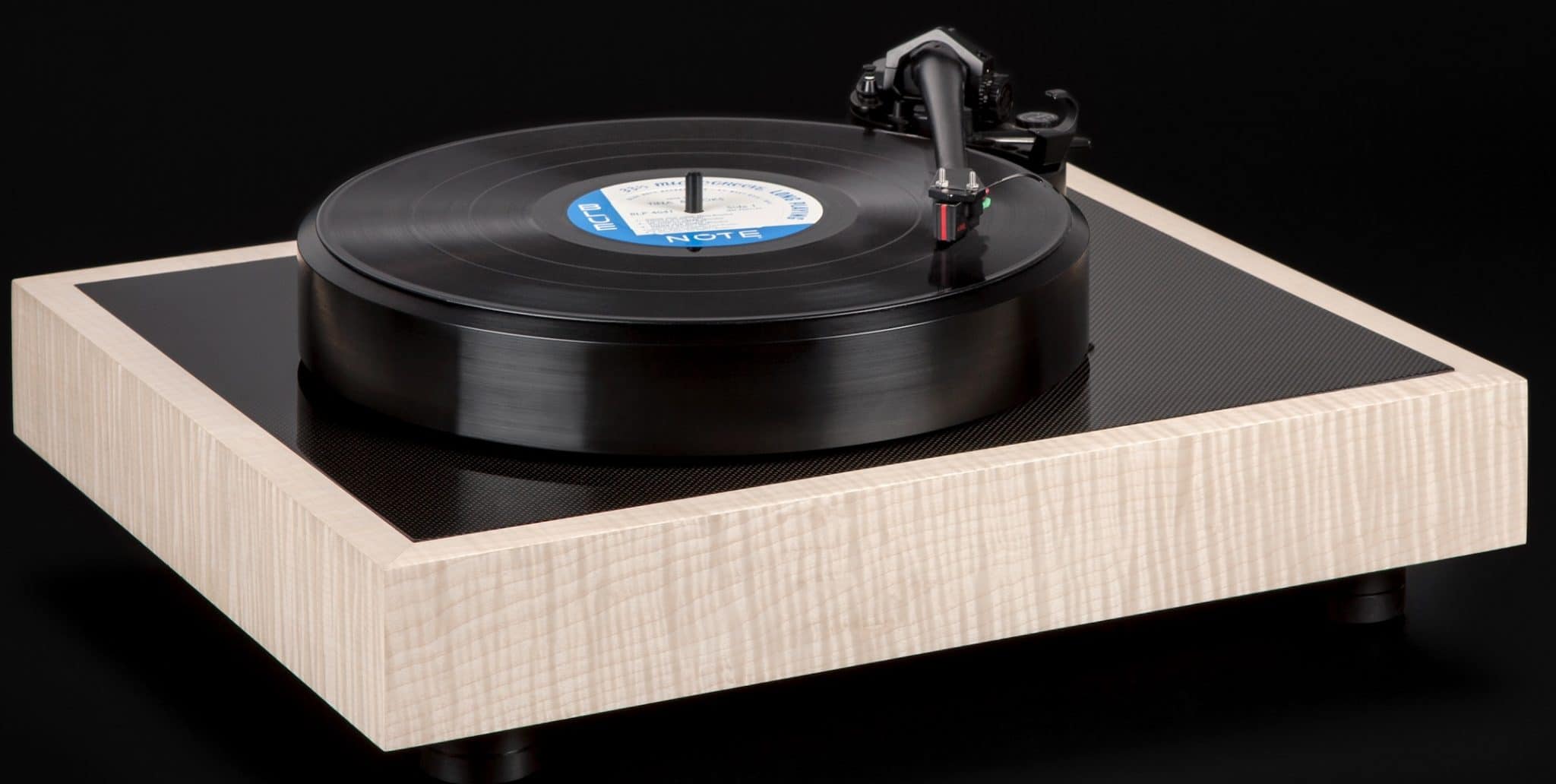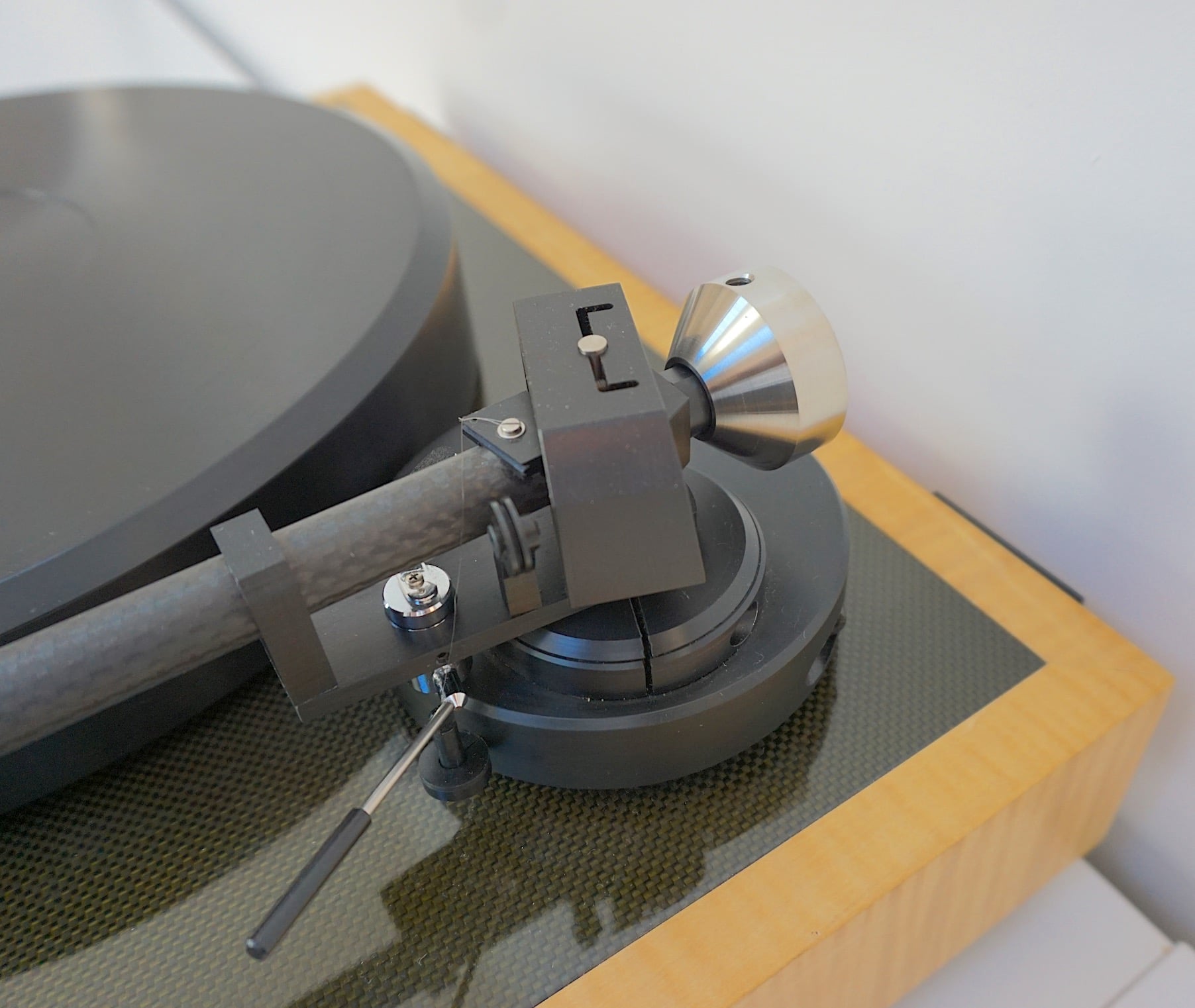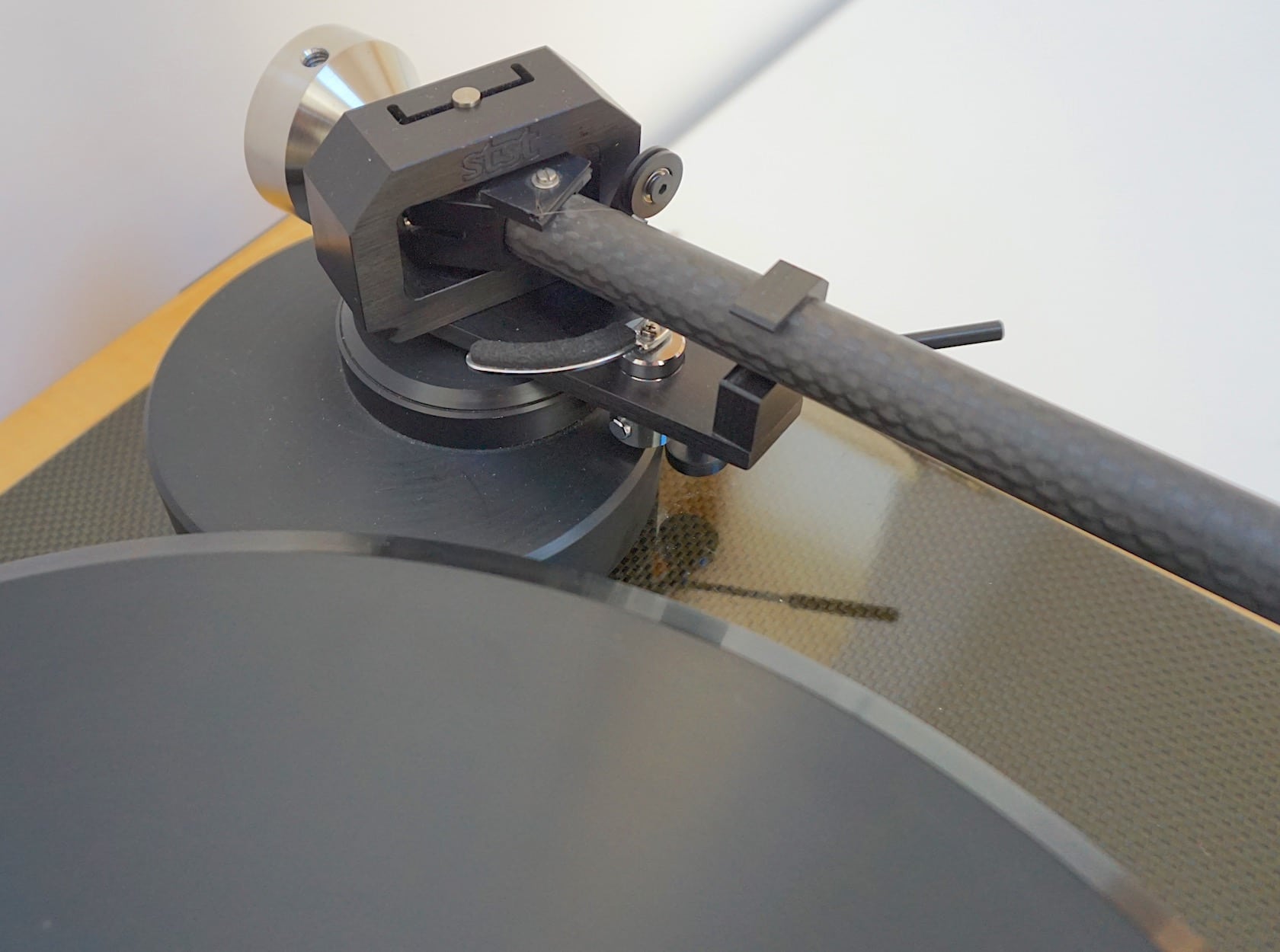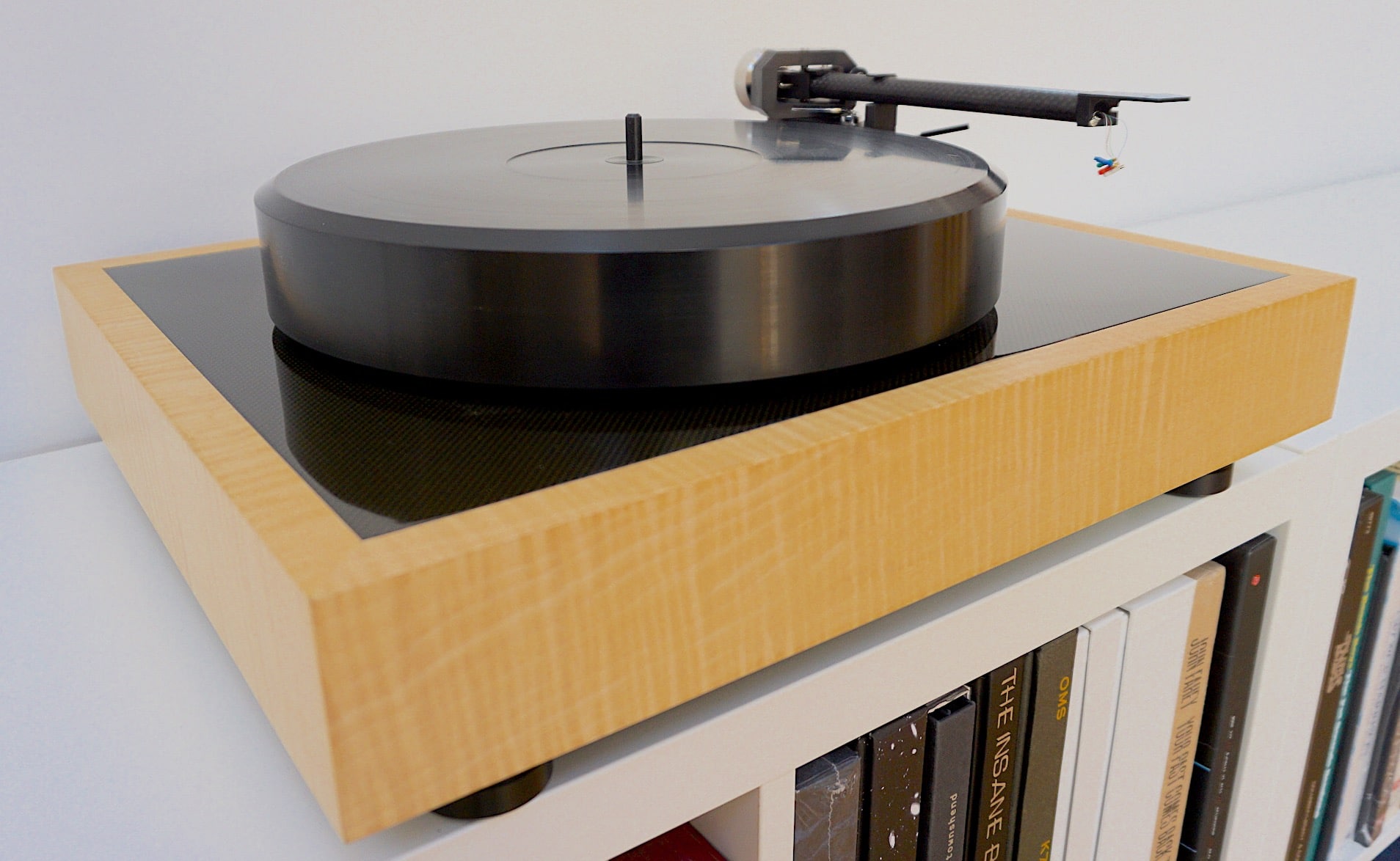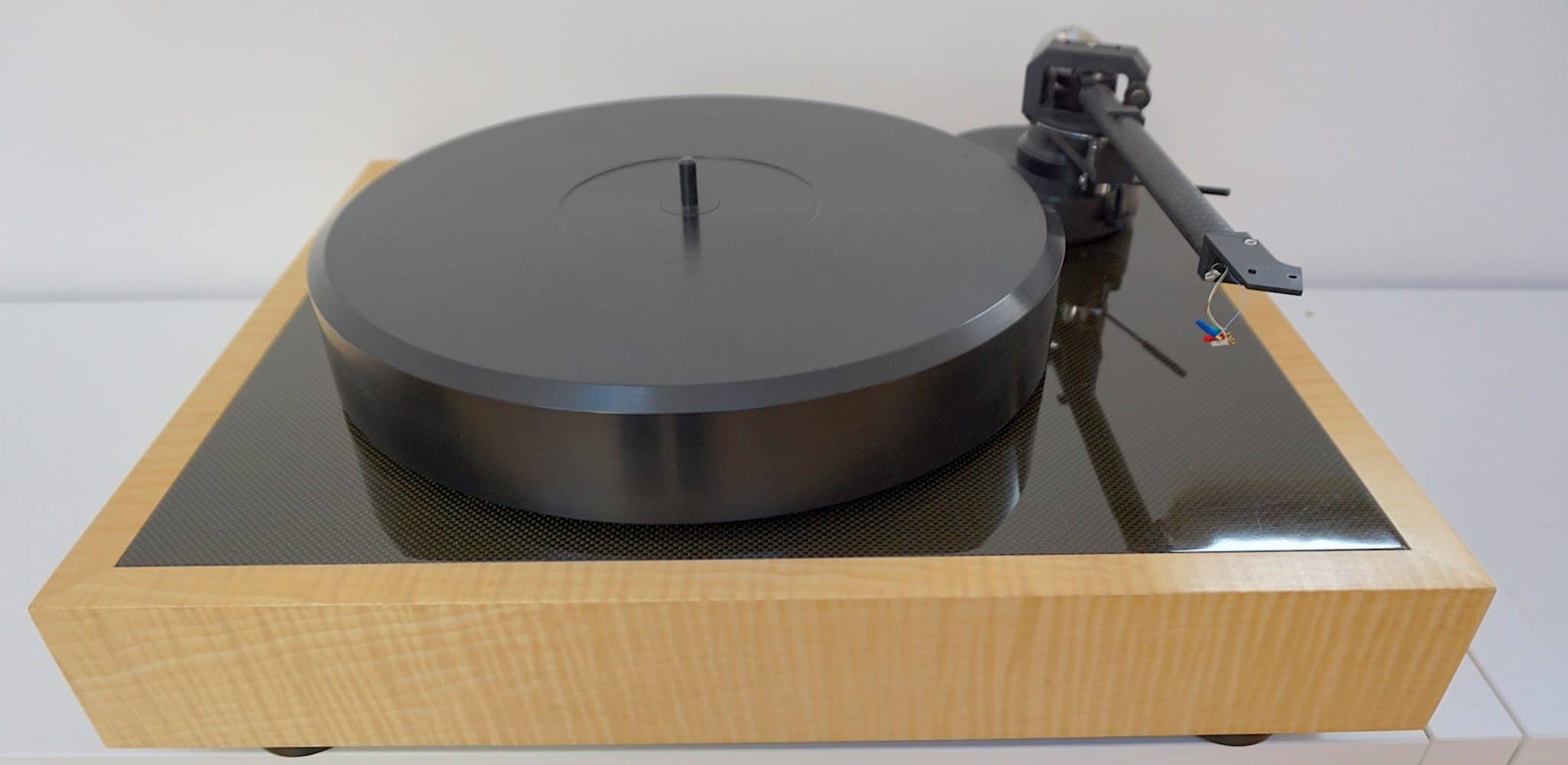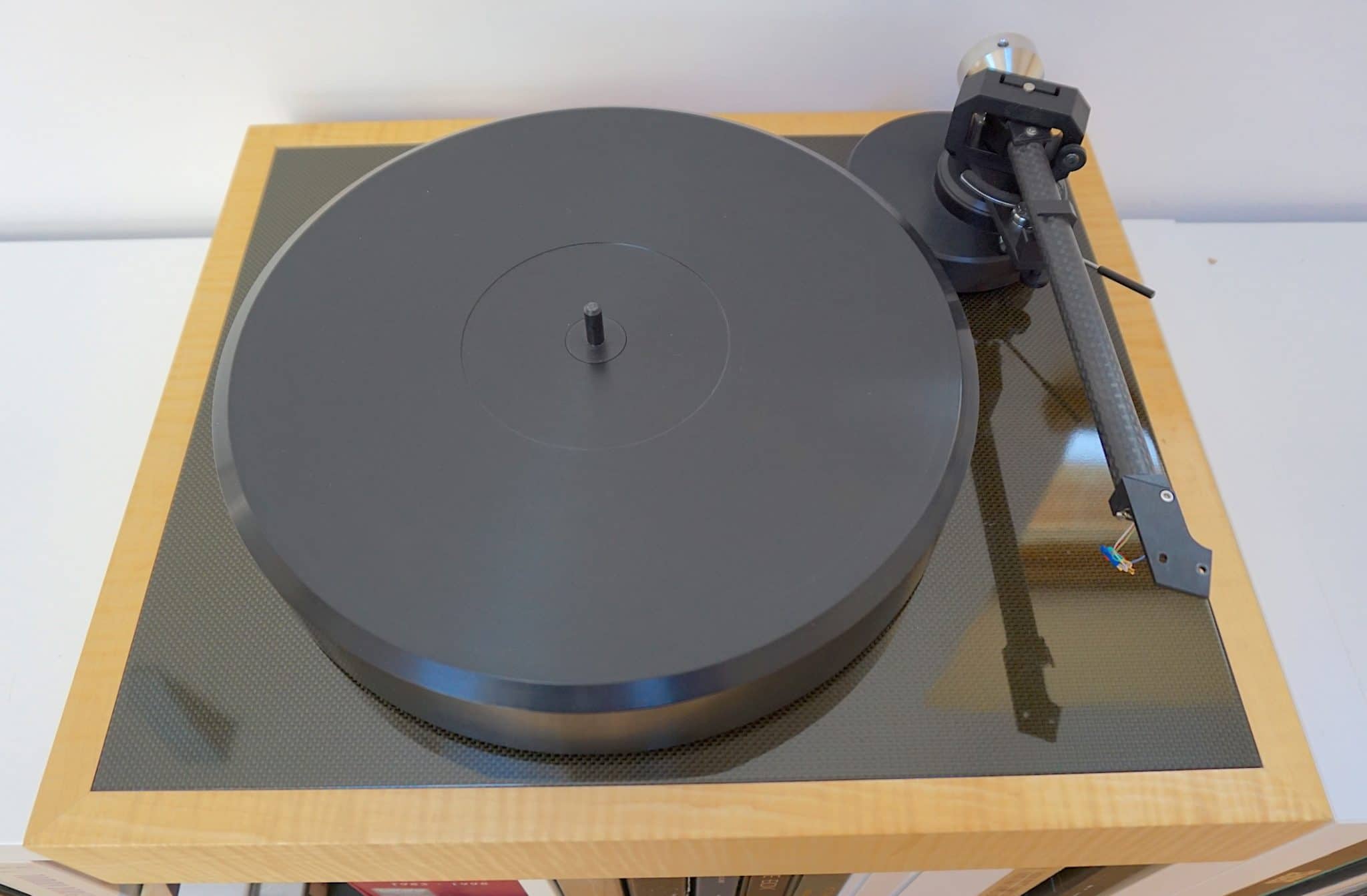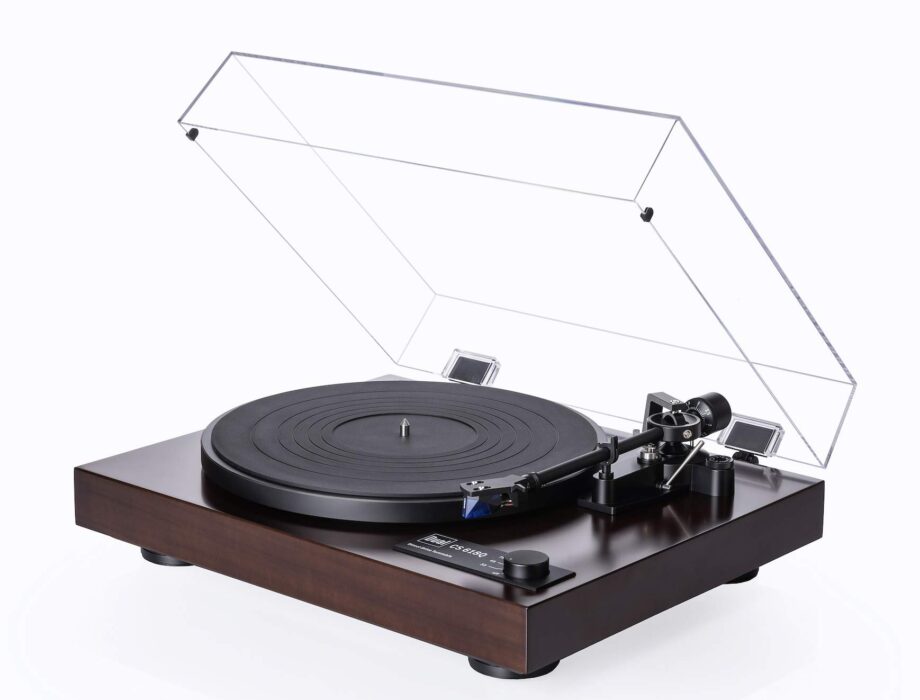The Article
Motus II Turntable from STST
4th November 2018
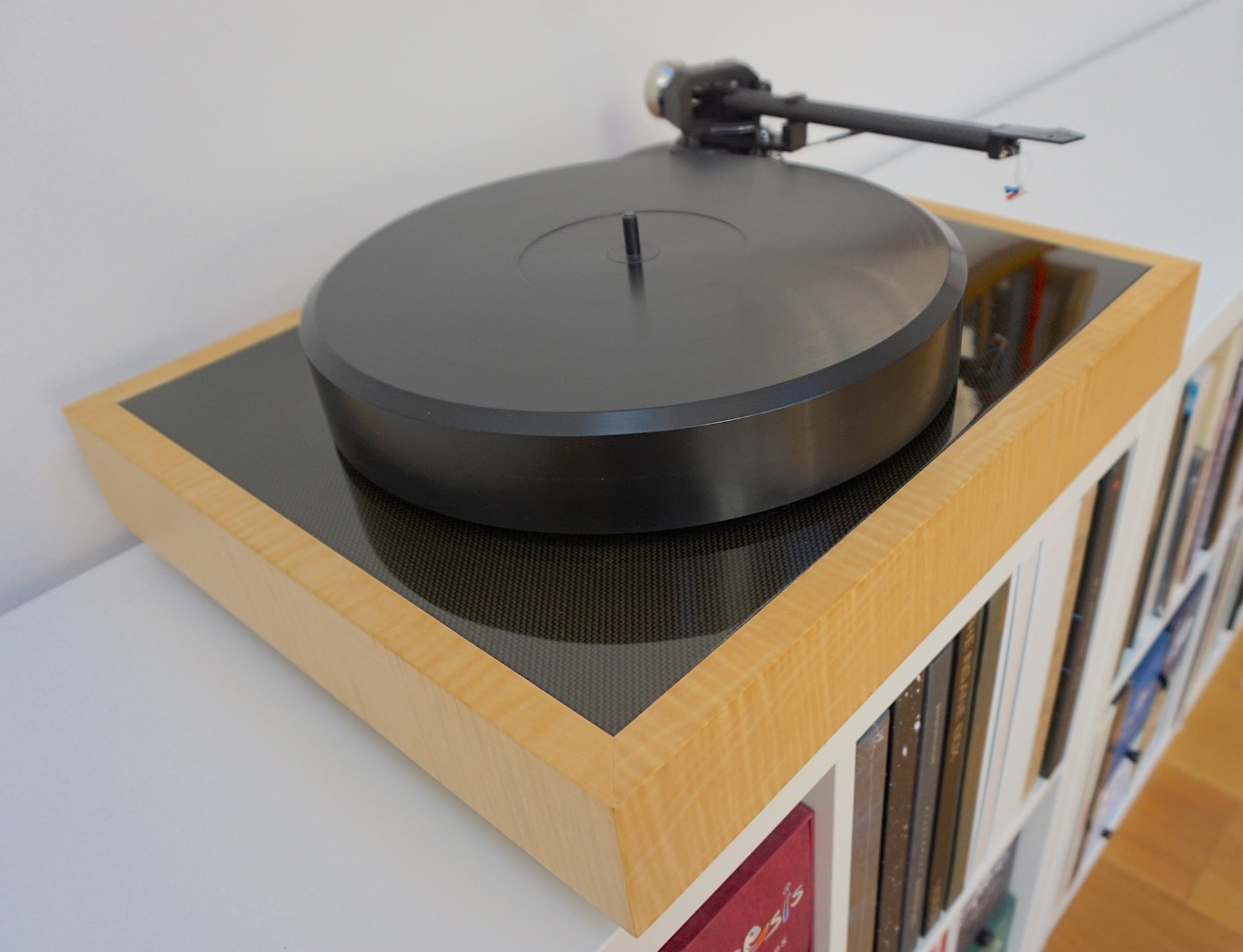
A rather cultured direct drive turntable from German outfit STST, Paul Rigby reviews the Motus II
We’ve been trained to hear the words ‘direct drive’ and then to, Pavlov-like, shout back, “Technics!” But there is more to Direct Drive than Technics and more ways of implementing that technology.
The Motus II from German company STST offers one such alternative. It uses a low torque approach, unlike the Technics’ typical high-torque DJ system. Low torque is a good thing for audiophiles. High torque might be a great DJ tool as it pushes the platter up from 0-60 in a microsecond and risks a speeding ticket in the process but it also means that all kinds of excess energy is created in the process. You force a platter to hit operating speeds in such a short time and you have to pump a heap of power into the entire area. That energy, once it has done the job, has then got to go somewhere and that somewhere is the platter. This is a bad move. It gets in the way of the sensitive cartridge, dulling the sound.
Also, the downside of the direct drive technology – extra vibrations from the motor situated right underneath the platter – is minimised within the STST by that low torque. The high density platter helps here because of its built-in high inertia (turn off this turntable at the end of a session and platter keeps going…and going…). Hence, a lot of the inherent direct drive sonic issues should not be present in the Motus II. We’ll see.
The rocker switch for that motor, incidentally, is hidden under the front edge of the plinth, maintaining the clean lines of the overall chassis design.
The Motus II is a deceptive design. On the face of it, the deck looks almost minimal, strong, meaty, sturdy yet stripped of frippery and fancy. It looks like a tool to do a job and no more (you can buy the plinth in a variety of finishes, incidentally). But then, the internal, 3-point suspension system reveals all.
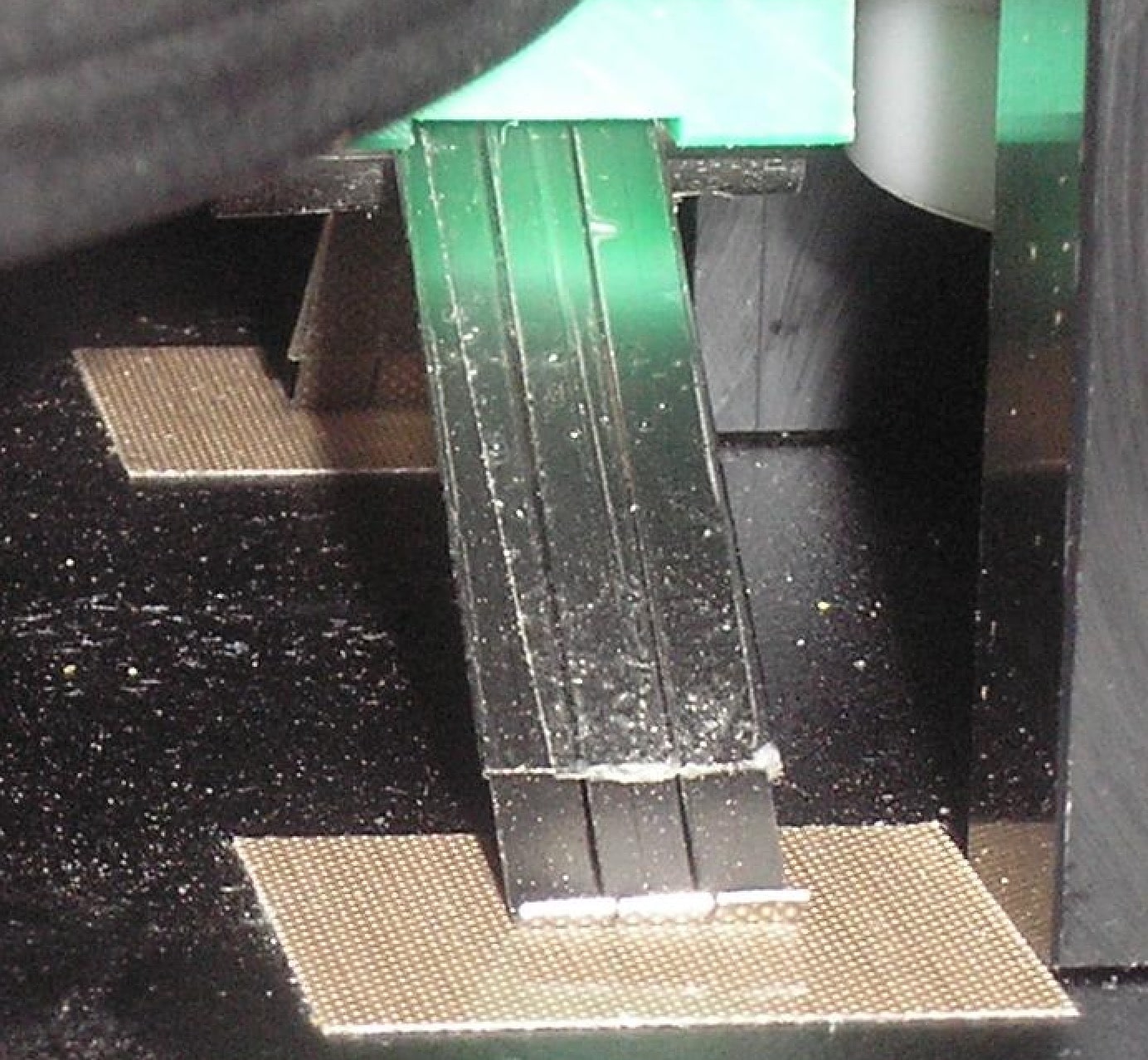
Inside the Motus II, you’ll find an inverted bearing with an in-house designed motor, mounted on a composite sub-chassis. This in turn is carried on three tension springs. Additional brass weights counter the mass of the tonearm so that the suspension can be centred on the position of the main bearing.
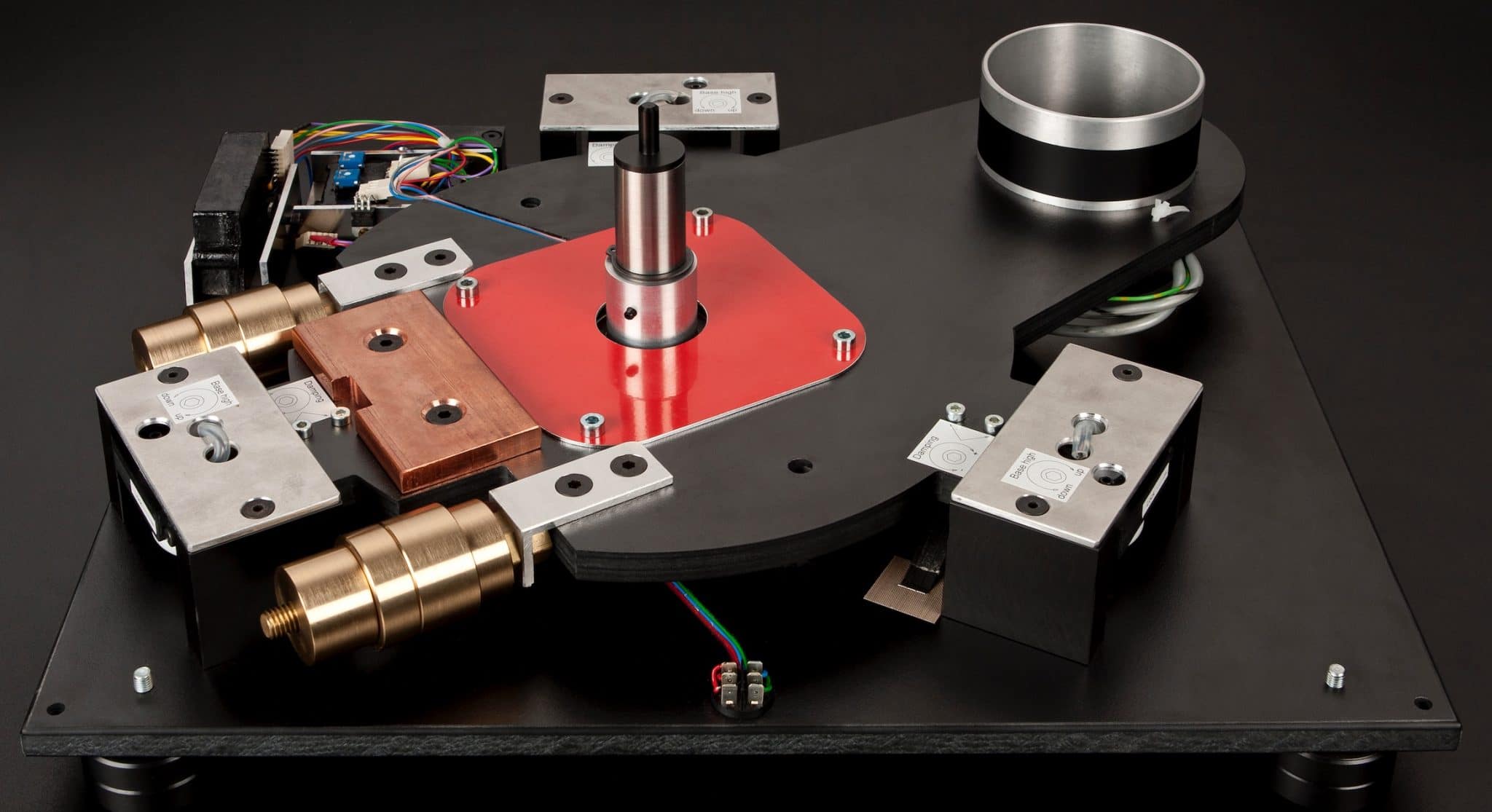
Each of the three tension springs can be damped via an additional adjustable leaf spring so that the suspension’s behaviour can return to rest quite promptly without compromising the isolation of the suspension system.
Hence, this complex bit of engineering, fixed to the base of the plinth, that you can see in the above image is movable, it can be pushed down with your hand if you fancy, the springs will return the unit back to its original position.

“Unlike conventionally suspended decks,” explained UK distributor, Guy Sergeant, “having the motor on the sub-chassis means that there’s no tendency for the usual remote motor and belt arrangement to pull the suspended mass around in opposition to the variable drag exerted by the stylus in the groove.”
The turntable works well, apparently with arms from SME, Alphason and Fidelity Research but I tested the turntable with the STST Vertex. The Vertex tonearm can be bought as 9″, 10″ or 12″ design (each is offered at the same price). It features a large diameter, stiff carbon fibre tube with POM (polyoxymethylene – otherwise known as Delrin) utilised throughout. The only significant pieces of metal within the structure are the counterweight and the shaft it sits on. The tonearm is mounted on a POM armboard which may be rotated to achieve the correct spindle to pivot distance and allow for optimal geometry for the cartridge. The platter, weighing in at 6kg, is also made from POM. A ‘dead’ substance offering zero ringing.
During the review, I used an Etsuro Urushi cartridge which will soon be reviewed separately but I wanted to use it here too. It comes from the Japanese Excel Sound Corporation who have been manufacturing cartridges for other brands for over 30 years. Recently they’ve been making the well regarded Hana range but the EU is their assault on the high end. It features a synthetic sapphire mounting plate, sapphire body parts to carry the generator, silver wired coils and a sapphire cantilever plus high quality fine line tip. The body is handled by Urushi lacquering specialists Etsuro.
SOUND QUALITY
I began with a original pressing of Joe Jackson’s high energy jazz LP, Jumpin’ Jive and the track, Jumpin’ with Symphony Sid.
My first impressions of the Motus II took note of both the upper and lower frequencies. For the upper mids and treble, I noted a natural array of fine detail offered in a rather polite and civilised manner. As for the bottom end? Plenty of control, big – although not overly so – and massy with a larger than normal presence when compared to a belt-driven turntable design.
The divergent nature of these two extremes was intriguing. It was almost as if upper frequencies offered a well-behaved and sophisticated ‘front’ with an animalistic undercurrent lurking below. Light and shade or Jekyl & Hyde, you might say. The sonic effect, how the two played off each other, was intriguing.
I have heard wider and grander soundstages from a vinyl front-end but the Motus II provided, instead, a real focus. This rather honed background to the music followed through to the instruments themselves. Cymbal hits, on my reference source were big open and spacious affairs while those same hits were rather more focused within the Motus II. There was an impressive precision on offer here, no doubt aided by the direct drive basis to the turntable that also helps to provide a comforting reliability to the presentation as a whole. That is, you never feel that any sonic frequencies will ever misbehave. There are no shocks in the offing. In fact, this is one of the most dependable and reliable vinyl front-ends the I’ve ever heard. That is, you will never suddenly hear barking upper mids, treble will never spark at you with a random ‘tizz’ and bass will never sound bloated or inebriated. This source offering is wholly in control.
But don’t let the formal, slightly Victorian, approach fool you, there is plenty of subtle and delicate information on offer here and a host of delights to discover. Cymbal hits were a transient delight, crisp, fast and precise with a real weight to the post hit cymbal sound, brass had a decisive nature to it – there was a real, almost absolute feel to the brass section, a basic gravity to the output. The piano had a calm, naturalistic yet easy going flow while the lead vocal was lean. There was no excess fat on the fast moving Jackson delivery as his diction was perfectly formed.
I then turned to an original pressing of The Rutles’ self-titled album and their Beatles parody of Lucy in the Sky With Diamonds, called Good Times Roll. The Motus II offered a superb degree of midrange insight with a beautiful reading of the lead vocal. Some sources can slightly smudge this delivery, losing a sense of articulation whereas the Motus II provided a shrewd grasp of the delicate nuances of the vocal. Again, the natural focus of the system helped enormously here.
The low noise nature of the turntable aided the instrumental separation which helped the ear to pick out and follow any instrument on offer. Even subtle effects were easily picked out. The bass, meanwhile was strong and forceful, adding momentum and a potency that was both impressive yet balanced. The bass was never too dominant, nor did it ever swamp the mix, yet its strength remained a major part of the music.
CONCLUSION
If ever a turntable could be said to be fully in control of the music it produced, the Motus II turntable is it. It patrolled across every single frequency, never allowing a wayward note nor a wobbling crescendo to encroach upon it. This design offers precision and a meticulous application to detail – music was transcribed diligently, with perfect accuracy but also with an easy, unhurried nature. Imagine a turntable that’s a cross between General Montgomery and Perry Como. That’s the Motus II.
STST Motus II Turntable
Prices:
Motus II turntable – £6,399.95
Vertex tonearm – £3,399.95
Tel: 01822 612449
Website: www.puresound.info
GOOD: focused presentation, frequency discipline, detail, bass power
BAD: nothing
RATING: 8
[Don’t forget to check out my Facebook Group, The Audiophile Man: Hi-Fi & Music here: www.facebook.com/groups/theaudiophileman for exclusive postings, exclusive editorial and more!]
REFERENCE
Origin Live Sovereign turntable
Origin Live Enterprise 12″ arm
Van Den Hul Crimson XGW Stradivarius Cartridge
Icon PS3 phono amplifier
Aesthetix Calypso pre-amp
Icon Audio MB845 Mk.II monoblock amplifiers
Quad ESL-57 speakers with One Thing upgrade
Tellurium Q Silver Diamond cables
Blue Horizon Professional Rack System
Harmonic Resolution Systems Noise Reduction Components
All vinyl was cleaned using an Audio Desk’s Ultrasonic Pro Vinyl Cleaner

